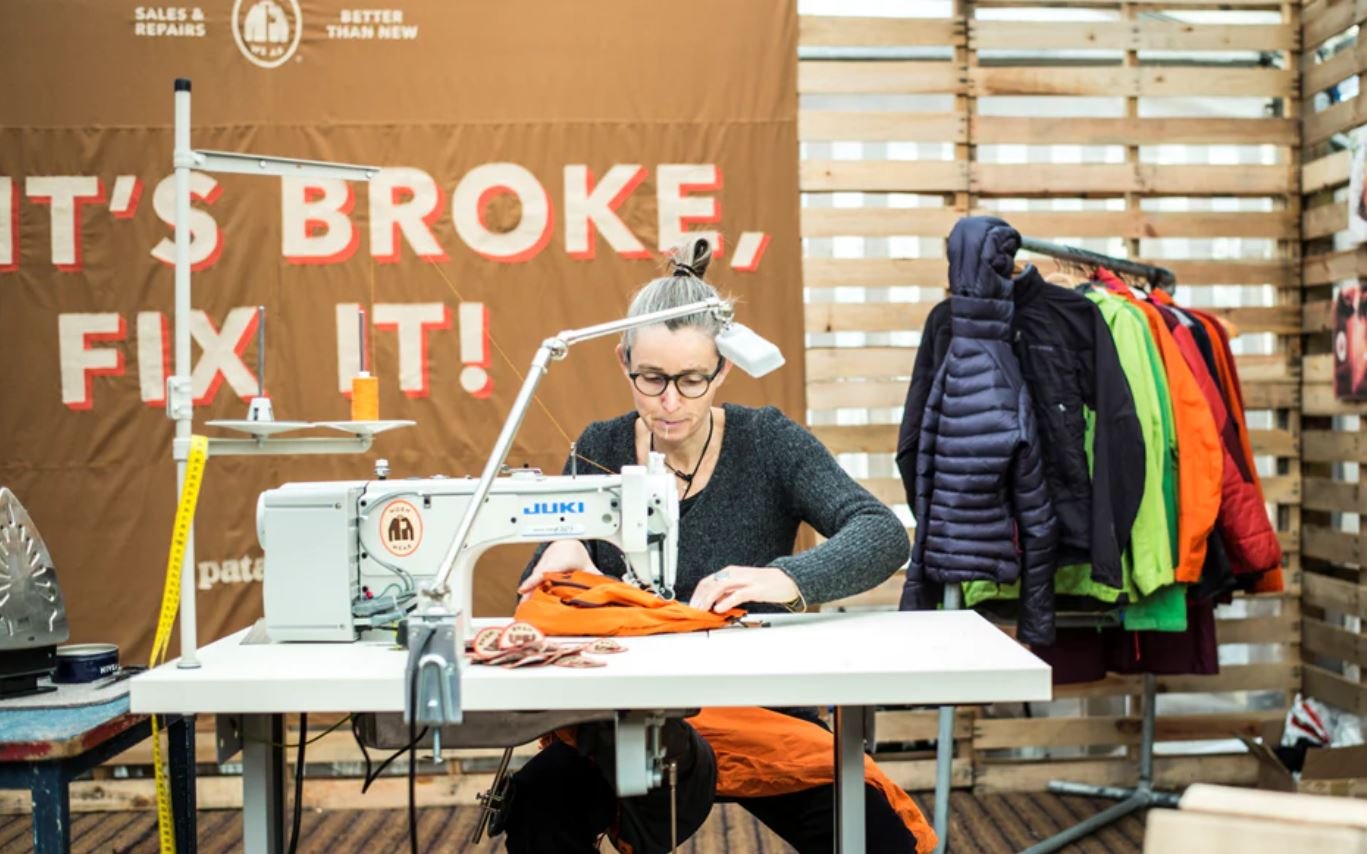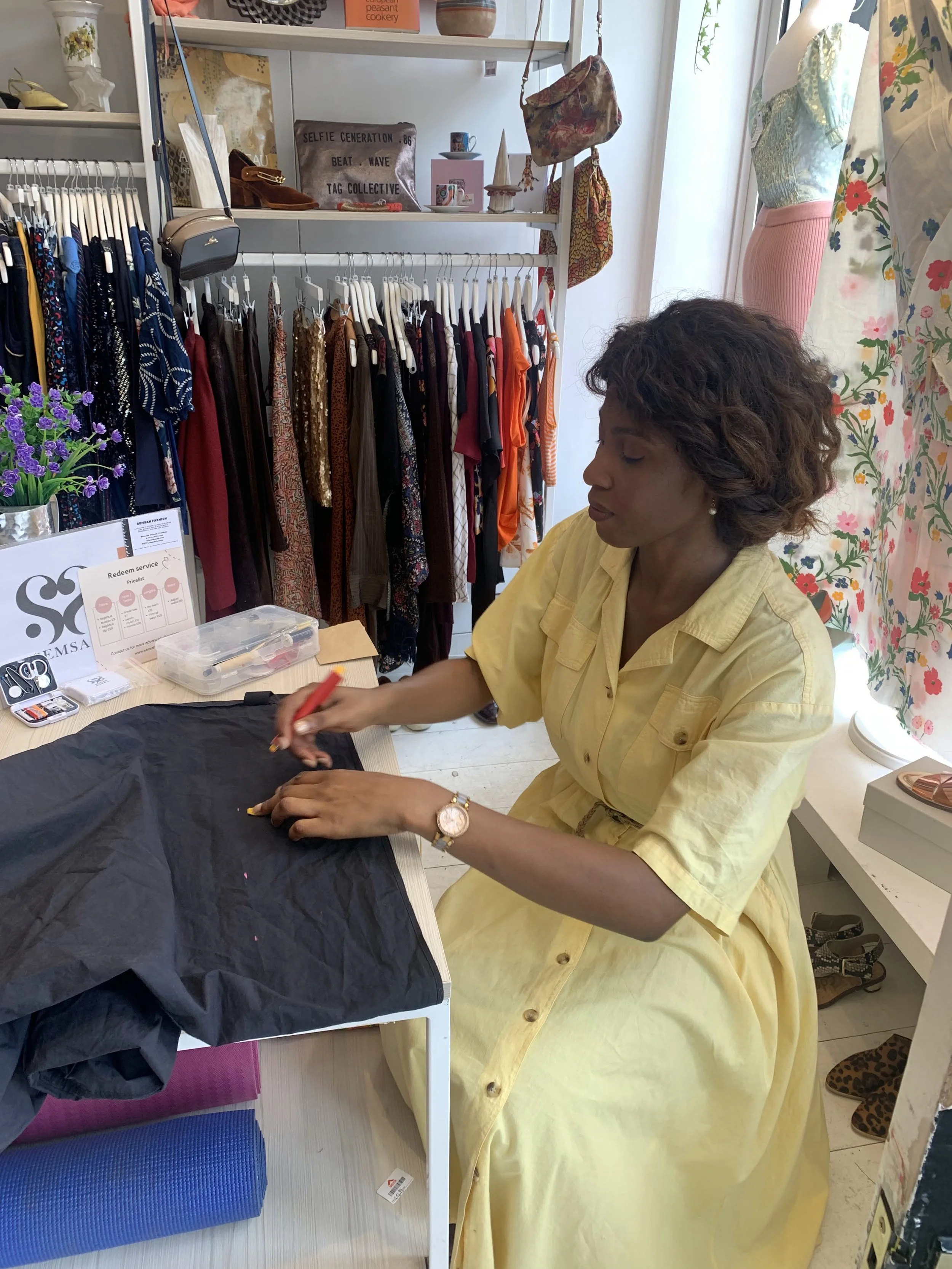Why start repairing garments?
A recent article in Fashion Network titled: “News from Jigsaw, John Lewis and Deloitte show rise in consumers aiming to repair, not replace”, highlights a turn of consumerism with the high cost of living forcing many to look at ways to extend clothing life instead of buying new. The article mentioned brands such as Jigsaw planning to offer in-house repair services for their customers.
Even recently Zara started offering repair services and it's looking with the rise of resale services, that repair will be another business model added to many fashion brand retailers. Even businesses like The Seam, which offers direct repairs to consumers have reported a rise of 300% in sales. Deloitte reported that many consumers are spending less and turning more to repair. This goes in line with the Wrap report on the benefits of Reuse.
The Fashion industry statistics for the UK estimate the industry’s worth at about £60.1 billion in 2022, for which around 300.000 ton goes to landfills each year. The Wrap report also highlights 57% of clothing is bought online, which is seen an increase in years. The report suggests that clothing repaired is retained for 5.4 years longer compared to new clothing's average lifespan of 4 years. Therefore, when you repair a clothing item you increase the product lifespan by an average of 1.3 years. That gives you at least enough time to save for a new item to replace the current. The table below is a screenshot of the Wrap report that shows an estimate of household costs that could have been saved if clothing became repaired. The conclusion of the report shows that UK households can save a total between £2 and £8 billion per year, £74-£280 per household each year. This is based on the cost of materials and the potential resale price.
BHF reported in a 2017 article: BHF EXPOSES UK SEWING SKILLS SHORTAGE TO LAUNCH THE BIGH STITCH CAMPAIGN; 59% (six in ten people) in the UK don't know how to sew. The absence of sewing skills taught in schools meant that 50% of Brits must ask their mothers to fix their clothing, 23% are unable to sew a button, 37% cannot alter the length of trousers and 25% cannot mend a rip in their clothing. This was reported 5 years ago and now we see an increase in this repair service business, supplying for the needs of the no-sew consumers.
It's no surprise to see a rise of brands introducing repair services and workshops to educate their customers in taking longer care of their garments, such as Toast with their Renewal workshop space in partnership with Somerset house in 2022. The high cost of customer returns and retaining customers make offering repair services a valuable business model for brands to have.
With the addition of resale, 3D fashion offers an alternative to buying new and reduces the amount of clothing made and send to landfills.
The Wrap report: CLOTHING LONGEVITY AND CIRCULAR BUSINESS MODELS RECEPTIVITY IN THE UK; states that almost three in five UK citizens (57%) will look at ways to repair their damaged clothing, the highest seen in women aged 55+ (68%) and women aged 18-34(60%), and the least seen in men. In addition, (22%) of items have been repaired by the owner themselves or paid service (9%). The increase in demand for clothing repairs has opened doors for emerging startups that connect makers with consumers to mend, upcycle and make garments. Bof's article: WHY REPAIR SERVICES ARE A GROWING BUSINESS, highlights a new business model that investors are betting millions on as interest in sustainability solutions is growing. Companies such as Save Your Wardrobe and Sojo are clothing apps, that connect consumers with tailors. In addition, The Restory offers repairs for luxury products and The Seam is for all types of consumer products. In addition, brands such as Patagonia has been offering repairs for years and is an advocate for sustainability.
The Bof article did raise a valid concern in terms of being able to scale up this business model. Not every item can be resold or repaired, as sometimes the value of doing that is less than the cost of purchase. This is also the reason why co-founder Vanessa Jacobs commented: Are we going to be servicing Shein? Probably not." The average price of a Shein item is often lower than the cost of repair, plus the material wasn't designed with longevity in mind. If for example, the product isn't designed with sustainable materials and garment construction isn't easy to reassemble, then it's already designated for landfills. Circular fashion design should be key to every fashion brand business, in order for resale and repair to be successful. These business models won't work if a brand's designs and materials won't last for an average of 4 years. Read the blog Shop-Mend-Make, a quick shopping guide to help you buy garments that last.
Plus, another issue is finding skilled workers to manage customers' expectations when items get restored. Most often when items get repaired, they won't always be as the original. It's important for the maker to inform the customer of what the item might look like and be able to deliver to their expectations.
Repairing, mending, and upcycling are skill sets, that not every sewing machinist has. The ability to invent new ways to restore an item that is broken and being able to articulate this to customers is a skill set!
Semsah is a sewing platform that is bringing this skillset in clothing repairs for aspiring makers to start mending, upcycling and making sustainable wardrobes and designs for their businesses.
We in turn host sewing workshops with our trained makers to the general public, in order to provide practical ways of fashion sustainability.
Get started by subscribing to the Semsah Fashion Youtube channel, to gain basic skills in clothing repairs that will keep your garment for 1.3 years longer and save you at least £74-280 per year.







